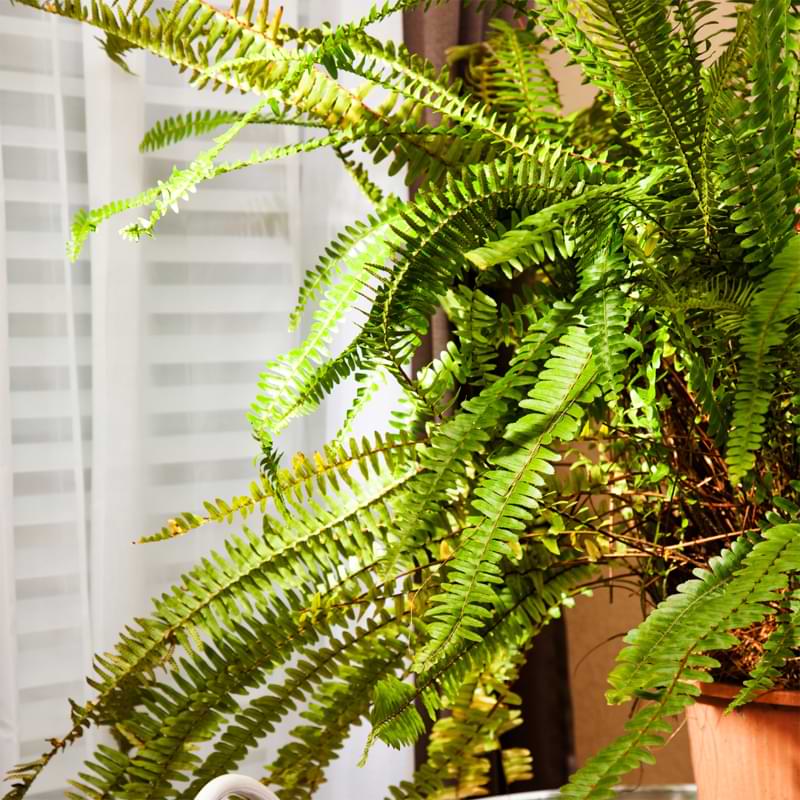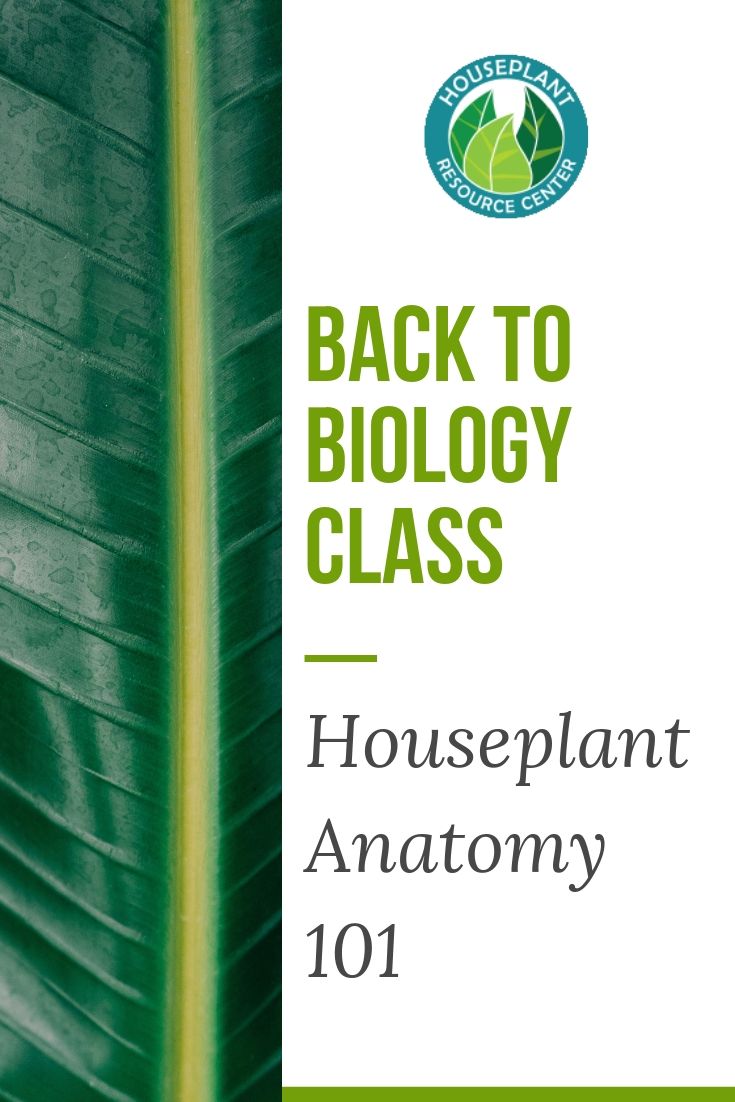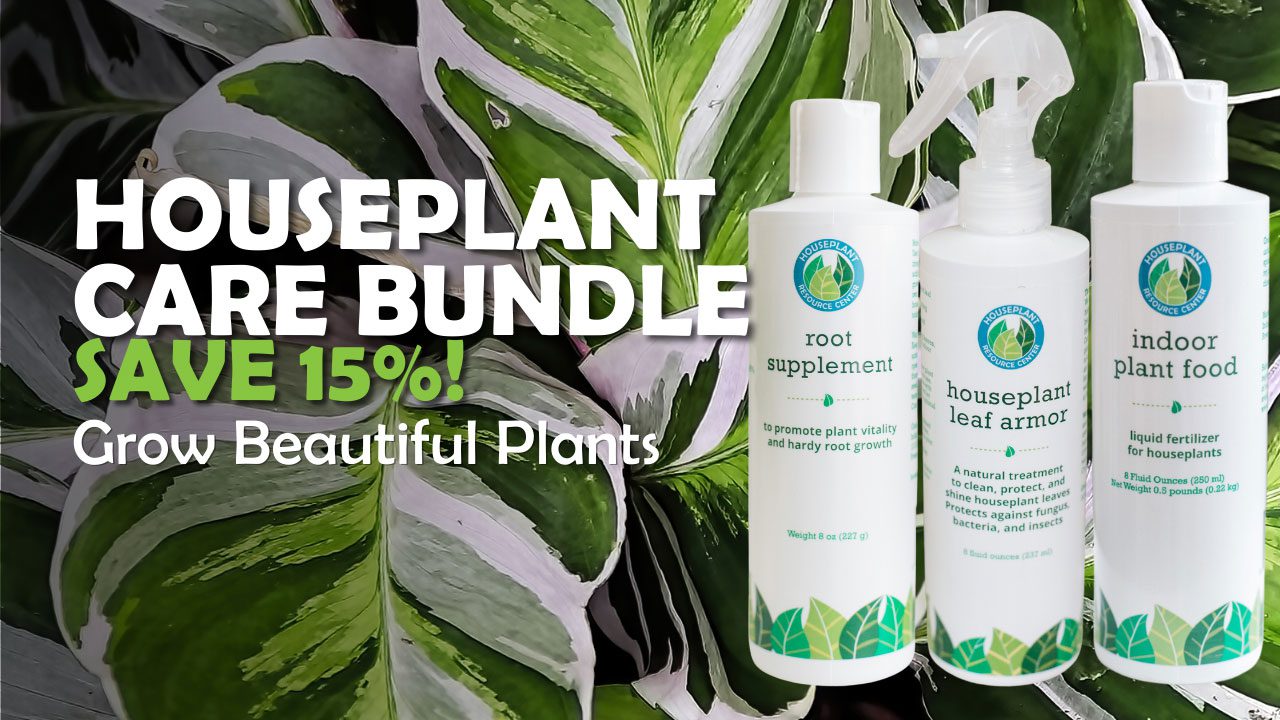We all know the houseplant rules, that plants need air and water and light and nutrients. We might have even heard to do things for our plants without knowing why, like why it’s important to dust the leaves, beyond just looking good.
It might have been awhile since your last biology class, so let’s do a quick review of plant anatomy so you can understand how your houseplants work, and therefore how to take the best possible care of them.
Table of Contents
Houseplant Anatomy 101
Like all living things, plants are made up of cells. But plant cells are a bit different from animal cells. While animal cells have flexible membranes on the outside, plant cells have rigid cell walls made of cellulose, a type of sugar, which helps give plants their shape, since plants have no skeletons.
Plant cells also contain chloroplasts, which allow the plant to carry out the process of photosynthesis and create energy from sunlight. Chloroplasts also contain a pigment called chlorophyll, which gives many plants their green color.
Like animals, plants have tissues, which are groups of the same type of cell. While we have many tissues such as skin tissue, lung tissue, brain tissue, etc., plants typically have three types of tissue: dermal tissue, ground tissue, and vascular tissue. Each of these tissues performs a different function that’s vital to the plant’s survival.
Dermal tissue is the outermost layer of the plant. Think of it like the plant’s skin (like our dermis). The dermal layer protects the plants from the elements, but it’s also porous to allow for the absorption of carbon dioxide so photosynthesis can take place. (This is why it’s important to keep leaves free of dust since dust can clog these pores and impede photosynthesis.)
The ground layer resides just under the dermal layer and contains the cells that carry out photosynthesis. This is where plants make their energy!
The innermost layer is the vascular tissue, which is very soft and is responsible for transporting water, energy, and nutrients throughout the plant. It functions very much like blood in animal bodies. Vascular tissue is mostly made of two different substances: xylem, which transports water, and phloem, which transports energy. (In trees, phloem is the sap.)

Parts of Your Plants
Roots
The root system provides support for the plant, either by holding the plant firmly in the ground or by using aerial roots to fasten the plant to other surfaces (this is the case with English ivy). Roots also take in water and nutrients from the soil, which is then transported by the xylem to the rest of the plant.
The root system can also store nutrients for later use in the form of sugar or starch. Some plants can store massive amounts of nutrients in the roots, which is where we get root vegetables like potatoes and carrots.
Stem
The stem provides support and a pathway for xylem and phloem to move water and nutrients around the plant. These stems can be thin and delicate or tough like the trunk of a tree.
Leaves
Leaves are like satellite dishes to absorb sunlight. This is where photosynthesis takes place, so leaves are crucial to the plant’s survival.
Flowers
For many of us, flowers are the best part of indoor plants. However, they’re much more than just a pretty face!
Flowering is a plant’s way of reproducing, which is why plants don’t produce them until they reach maturity and only at certain types of year when conditions are ideal for reproduction. Just as many animals have a reproductive season, so do plants!
Flowers contain male and/or female parts and rely on pollinators like insects to spread their pollen around and produce new plants from seeds. However, this doesn’t really happen with houseplants because there are no pollinators inside (unless you raise bees in your house!).
Environmental Adaptations
All plants have these essential functions, which are specifically adapted for survival in their own unique environments.
Evergreen trees look very different from, say, aloe vera, but they’re still plants and still function in the same way, even if parts of their anatomy are combined or look very different from most plants.
In snake plants, for example, the stems and leaves are combined and serve both as support, a transport pathway, and a platform for photosynthesis. In pine trees, the leaves have evolved into tough needles to withstand the cold. Succulents store a great deal of water in their leaves so they can survive in the desert where water is scarce.
Each plant is perfectly adapted to absorb sunlight, nutrients, and water in the environment where it evolved, which is why it’s so important to recreate these environments in our homes with the correct soil, ideal lighting, perfect watering routine, and the right fertilizer.
Knowing how your plant works can help you take the best care of it! So take a look at your houseplants today and think how its anatomy helps it grow and thrive.




